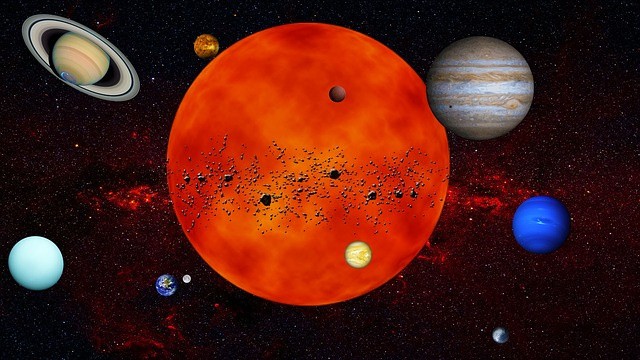
Stargazers are in for a treat as the crescent moon and five planets all align in the night sky to form a planetary parade.
Planetary Parade
According to the Space Academy, a planetary parade takes place when many planets appear to be close to each other across the sky. Such a phenomenon takes place because planets move around the sun at varying distances and speeds. At times, they fall into line and look visible altogether.
These unique sightings do not pose any dangers, nor are they common. They just serve as a reminder of some sort of the earth's place in the solar system.
Spot These Planets
Clear night skies and a good horizon view grant the best chances of witnessing this rare planetary parade. The BBC notes that the best shot to spot these planets was to stay far from bright night lights and go to an area that offers an unobstructed and clear view of the night sky.
As per the Space Academy, Venus, Jupiter, Mars, Uranus, and Mercury are the visible planets in this planetary parade.
According to Cameron Hummels, who is a computational astrophysicist at the California Institute of Technology, much of this rare parade can be seen with the naked eye. This is so even in areas that have significant levels of light pollution, though some planets may require binoculars or telescopes to be seen in these pollution-heavy areas. The planetary parade can also be spotted from the northern and southern hemispheres, as noted by ABC 7 New York.
Venus is the second-closest planet to the sun and is also the brightest one in the solar system. Because of its bright shine close to the horizon, Venus is often referred to as the morning or evening star. Because of its remarkable brightness, this planet will be the easiest to spot, as noted by ABC 7 New York.
On the other hand, Jupiter, the largest planet in the system, is the fifth planet from the sun. It has a strong magnetic field and many moons of its own.
Mars, the fourth planet from the sun, has a unique reddish hue. Due to its iron-dense soil, it is also known as the "red planet." Hummels notes that because of its signature tint, the planet may be easy to pick up.
The third-largest in the system, Uranus is the seventh planet from the sun. It is a gas giant that has an axis that is tilted. Because of this tilt, Uranus rotates on the side. Uranus will show up close to Venus. However, it may be hard to see it without a telescope or pair of binoculars, unless one views it from an unobstructed view.
Lastly, the smallest planet, Mercury, is the closest to the sun. Because of the sun's glare, however, the planet tends to be elusive.
As per Hummels, these planets will fill the night sky in a way that mirrors pearls on a necklace.
Witness the Planetary Parade
Though the sightings began on March 25, there are still some things that stargazers can look forward to in the coming days and nights.
On March 28, the moon will be closer to the bright and orange-looking Mars. Both Uranus and Venus will remain close to each other, while Mercury and Jupiter will nearly touch near the horizon.
By March 29, the moon will be farther from Uranus and Venus and appear above Mars. Both Mercury and Jupiter will be lower and even more difficult to spot.
On March 30, the moon will be situated high in the night sky, leaving the planets behind. Among the planets, Mars will be the highest. It will be followed by both Uranus and Venus. Before sunset, both Mercury and Jupiter would have set.
RELATED ARTICLE : How Did the Planets of Solar System Align on the Same Plane? Orbit Line-Up Explained 4.5 Billions of Years Ago
Check out more news and information on Space in Science Times.











